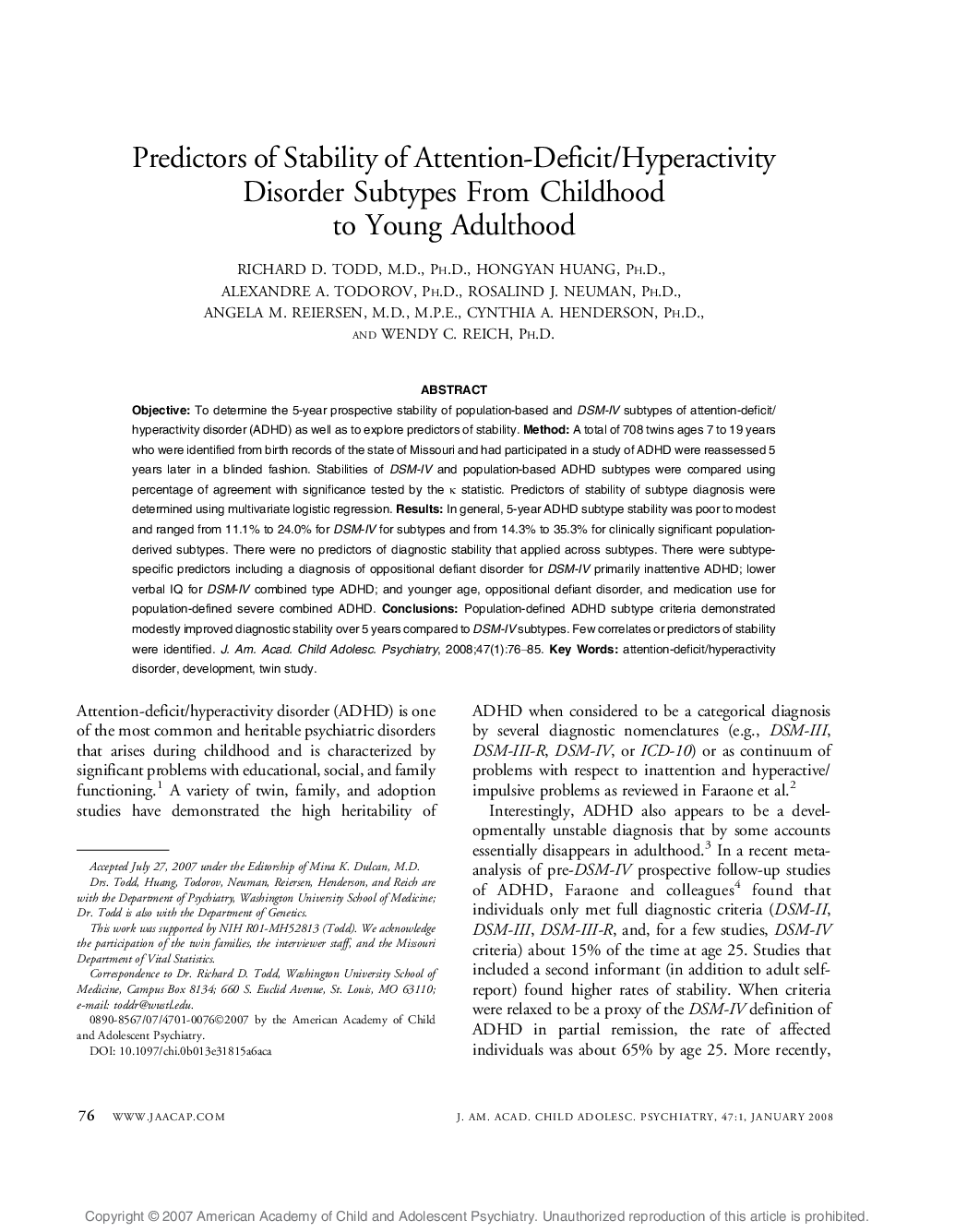| Article ID | Journal | Published Year | Pages | File Type |
|---|---|---|---|---|
| 325988 | Journal of the American Academy of Child & Adolescent Psychiatry | 2008 | 10 Pages |
ABSTRACTObjectiveTo determine the 5-year prospective stability of population-based and DSM-IV subtypes of attention-deficit/hyperactivity disorder (ADHD) as well as to explore predictors of stability.MethodA total of 708 twins ages 7 to 19 years who were identified from birth records of the state of Missouri and had participated in a study of ADHD were reassessed 5 years later in a blinded fashion. Stabilities of DSM-IV and population-based ADHD subtypes were compared using percentage of agreement with significance tested by the κ statistic. Predictors of stability of subtype diagnosis were determined using multivariate logistic regression.ResultsIn general, 5-year ADHD subtype stability was poor to modest and ranged from 11.1% to 24.0% for DSM-IV for subtypes and from 14.3% to 35.3% for clinically significant population-derived subtypes. There were no predictors of diagnostic stability that applied across subtypes. There were subtype-specific predictors including a diagnosis of oppositional defiant disorder for DSM-IV primarily inattentive ADHD; lower verbal IQ for DSM-IV combined type ADHD; and younger age, oppositional defiant disorder, and medication use for population-defined severe combined ADHD.ConclusionsPopulation-defined ADHD subtype criteria demonstrated modestly improved diagnostic stability over 5 years compared to DSM-IV subtypes. Few correlates or predictors of stability were identified.
